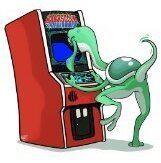
When I got it, the tester was in a very well-used state, with the case being held together by duck tape. The first thing I did was add hinges and latches to make the case open and close as it should. What I used was just generic latches and hinges meant for small kitchen cabinets. It turned out very well in this case. I think it looks very nice for this application.
The next step was to replace the line cord, the original was not in very good shape. It was starting to fray on both the line and neutral wires, because it risked a short, I replaced it before I even powered it up. While I had it dissassembled, I also relfowed the solder joints that were on the board, particularly with the connectors.
After it was patched up, I was able to finally test it. It powered up fine, and even let me set the heater and G1 voltages. The problems arose when I tried to set the G2 cutoff voltages for each gun. To describe the problem, basically if you turned one knob, all the guns would adjust, which is incorrect as they should adjust individually. After the annoying disassembly, I realized that overall it was simple, but a mess. Thank goodness for the good dissassmbly instructions, which guided me through the process.
So after reading the service manual and looking at the schematics, I was able to narrow down the points of interest. Since it was a more universal issue, it mostly had to do with the circuit containing the vacuum tube and the multiplexing circuit.
The service manual suggests checking a few places in this area, the 12BH7A vacuum tube, transistor Q1, diodes, D1 through D4, capacitors C11 and C12, resistors R41 and R43, and the two integrated circuits involved in the waveform generation. Unfortunately, none of these components tested bad, everything in theory was working. I even brought the tube to a local electronics shop that still had the oldschool tube tester. Afterword, I started just checking the components that were not specifically listed in the service manual as points of interest. To my surprise, the culprit ended up being a few bad resistors that showed no signs of damage. The major one was R70, which was connected to the tube itself was open. Two other resistors, R44 and R37 were also out of spec. After replacing these, I put the thing back together (frustratingly you have to reassemble the whole thing in order to properly test it.
After everything was said and done, I fired it back up and was finally able to set the cutoff properly and move forward with the other functions. Everything seems to be working great now, I was even able to use it to clean and balance one of my Donkey Kong monitors, tested good afterwords as you can see in the image below.
All that is left now for me to do with this tester is to build more adapters, which I will do as I aquire more sockets. I also need to just build one of those universal harnesses in case I can't get the socket.
- Read more...
- 0 comments
- 1,788 views

